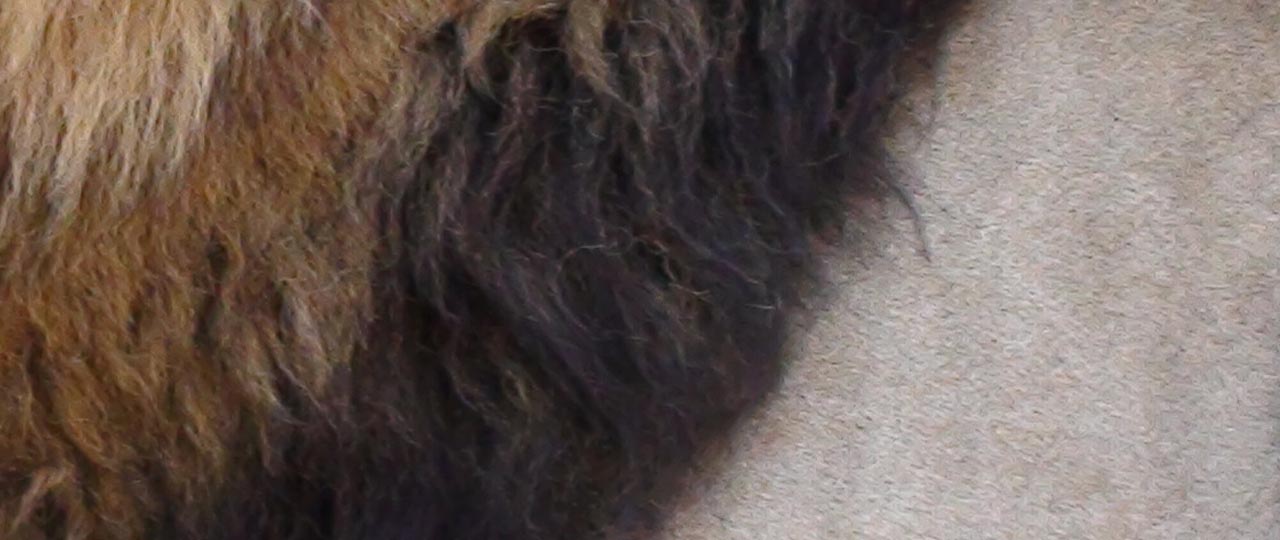
Lions
Panthera leo
Cunsi
Cunsi has the distinction of having yanked more handlers off their feet than almost any other cat.
Kola Kici Ya
Kola sometimes gets so excited that she will springboard straight up into the air with all four paws. To see such a big creature jump straight up five feet off the ground reminds you of how powerful she really is.
A Lion Lesson

Lions have long been held in high regard well beyond the borders of their territory. A noble carriage and soulful eyes make it easy to see why they are known as the “king of beasts.” They are held up as symbols of strength and power by Fortune 500 companies, countries such as the United Kingdom, and many colleges both large and small. If you visit the New York Public Library, you will be greeted by “Patience” and “Fortitude,” their lion statues who guard the entrance to the revered landmark. In the natural world, the lions have been divided into two geographically-named sub-species: the African and the Asiatic. They prefer plains and savannahs full of prey with areas in which to hide.

They are overall tawny brown in color with some white on the underbelly. The most easily recognizable characteristic of the lion is the legendary mane which only the males possess. Weighing in at a stunning 260 – 500 pounds (120 – 225 kg) and measuring 5 – 8 feet (1.4 – 2.5 m) in length, they are surprisingly not the most efficient hunters on the savannah. This honor belongs to the hyena – a fierce rival. Actively hunting at night, they are technically classified as “nocturnal” (night-time) hunters but have an overall “crepuscular” pattern (most active at dawn and dusk) to their overall behavior. They will “sound” or roar at these times in an effort to locate and identify nearby groups of lions or “prides.” On the open savannah, this sounding can be heard up to five miles away. Lions prey upon many different animals: rodent, crocodiles, ostrich eggs, gazelles, wildebeests, and even the enormous cape buffalo.

They are stalk and ambush predators who hunt in groups. Other than hunting, the majority of their time, up to 20 hours of it, is spent sleeping. The African lion is listed as “vulnerable” by the International Union for Conservation of Nature (IUCN). This means that these animals have a 10% chance that they will become extinct in the next 100 years if the current conditions remain unchanged. These once plentiful animals are threatened by human hunting (to protect their livestock or villages), the lack of enough prey to sustain a population, and habitat loss. The African lion now calls the many preserves of central to southern African its home. Here, the lions are managed and are the most popular attractions for eco-tourists on safari. This fact helps to strengthen their importance to the villagers with whom they often come into conflict. The Asiatic lion, on the other hand, is listed by the IUCN as “critically endangered” which means that there is a 50% likelihood that this species will become extinct within the next three generations if their situation does not improve. The fewer than 400 remaining individuals reside in a small section of India’s Gir forest. It is this isolation and lack of sufficient prey due to human encroachment that are the biggest threats to this last non-African species.
Sources:
Bauer, H., Nowell, K. & Packer, C. 2012. “Panthera leo.” IUCN 2013. (Online), IUCN Red List of Threatened Species. Version 2013.1. August 03, 2013. <http://www.iucnredlist.org/details/15951/0>.
Harrington, E. 2004. “Panthera leo” (Online), Animal Diversity Web. August 01, 2013.
<http://animaldiversity.ummz.umich.edu/accounts/Panthera_leo>.
If you would like to see more pictures and read more about our lions, please see their pages.



